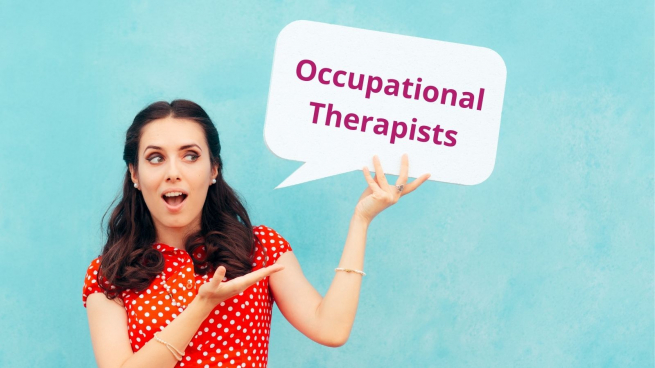
This blog has been written by Katherine Sellors for her fellow Occupational Therapists. The aim is to help break down communication barriers and enable conversations about sex and sexual expression with patients in your care.
Sexual Expression
Occupation is what is meaningful, and it can be argued that nothing is quite as individually meaningful as sexual expression.
Sexual expression is the individual expression of sexual self and interpersonal interactions (emotional and/or physical). It’s a very objective concept but that’s what makes it so great.
It includes:
- what makes you feel attractive and good about yourself
- your sexual behaviours and desires
- incorporates sexual orientation, gender identity and gender expression
Unique to each person it can be such a core part of our identity that it is a protected right under the Human Rights Act. Despite working in a variety of sectors as a profession, OT’s should always be working holistically, meaning we may need to discuss sexual expression no matter where we are working.
Appropriate Practice
Your employer may have policies and procedures in place telling you exactly how to manage these situations when they arise which is great! Unfortunately, if you don’t have these in place, it can muddy the waters on what would be considered appropriate practice. The second place we would look would be our professional standards but unfortunately guidance here is also limited. Fortunately, there is other guidance out there we can use.
One of my favourites is the PLISSIT model or the more recently expanded, or Ex-PLISSIT, model.
PLISSIT / Ex-PLISSIT Model
The premise of this model is that is an acronym of various stages of treatment. First we must give our patients Permission to talk about sexual expression, then we must provide Limited Information meaning we only give them an overview of information that often helps support sexual expression, following this are Specific Suggestions, information for their circumstances and finally Intensive Therapy which is referral to specialist services. Some patients may not need to go through the full cycle and may find their difficulties are resolved after the initial steps, others may need to complete the cycle multiple times for a variety of different needs.
The difference between PLISSIT and Ex-PLISSIT is the concept of permission being expanded through all the stages. So, remember Permission, Limited information, specific suggestions, and intensive therapy.
Recognition Model
A different model is the Recognition Model, the premise of this being we need to recognise our patients as sexual beings and once we have done this, we will be able to feed that recognition into our treatment.
In principle this would be like recognising any occupations our patients may wish to pursue from washing and dressing to writing a novel. We would help them engage in sexual expression using the same clinical reasoning we would to support any engagement. It has been suggested, to do this, we can add the concept of supporting sexual expression to our explanation of OT and what we can help support and then allow the patient to lead from there.
There are other models and guidance for discussing sexual expression in academic journals relating to specific areas of practice such as learning disability, nursing homes and rehab that may be of individual benefit.
This does beg the question “what if I don’t feel comfortable”. It is important we recognise our own comfort levels and areas of knowledge to ensure we give the best care to our patients.
If you truly feel you are not the best person to address this with someone that is ok as the information doesn’t have to come from you. It is important we don’t make our patients feel uncomfortable for raising their issues, so take down whatever information you feel comfortable with and signpost to a more appropriate information source or professional.
It is important to note that this article is not advocating working outside of comfort zones or appropriate practice but to highlight an area of practice that we can be involved in. If you are unsure or want clarification before acting then speak with HCPC, RCOT or your workplace for their clarification.You can also enquire about Enhance the UK’s Sexual Expression Training.
Useful Links
Enhance The UK –
The expert team are experienced trainers, enquire about their Disability and Sexual Expression training.
https://enhancetheuk.org/disability-and-sexual-expression-training/
The Health and Care Professionals Council
https://www.hcpc-uk.org/
Royal College of Occupational Therapists
https://www.rcot.co.uk/
The Undressing Disability Hub
Sign up for free to access free resources and network with others working or interested in the field of sex and disability.
https://undressing.enhancetheuk.org/signup

